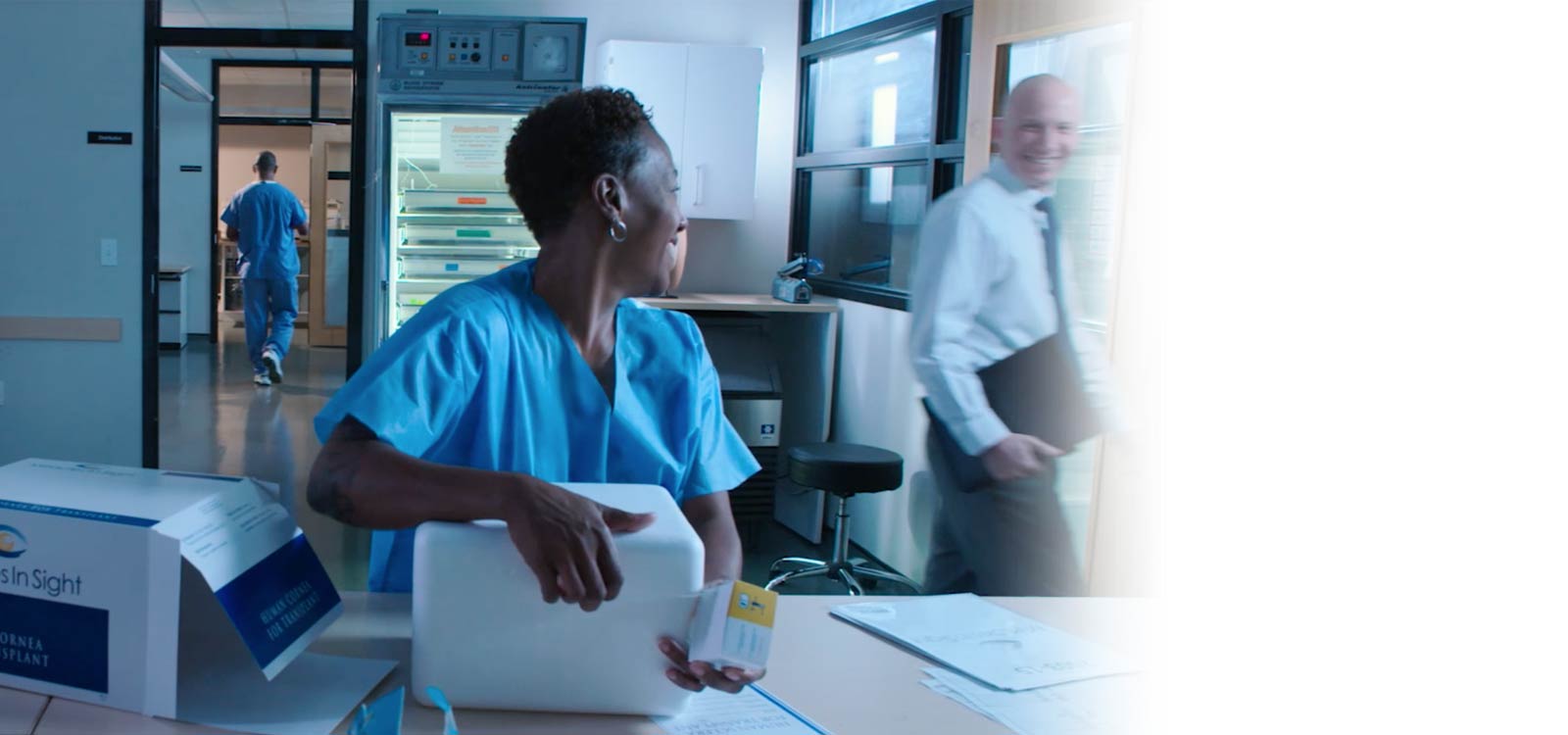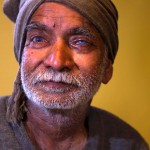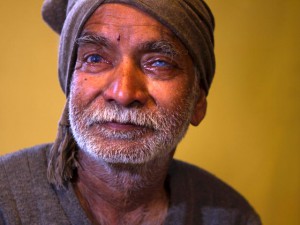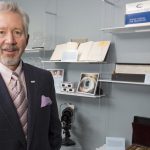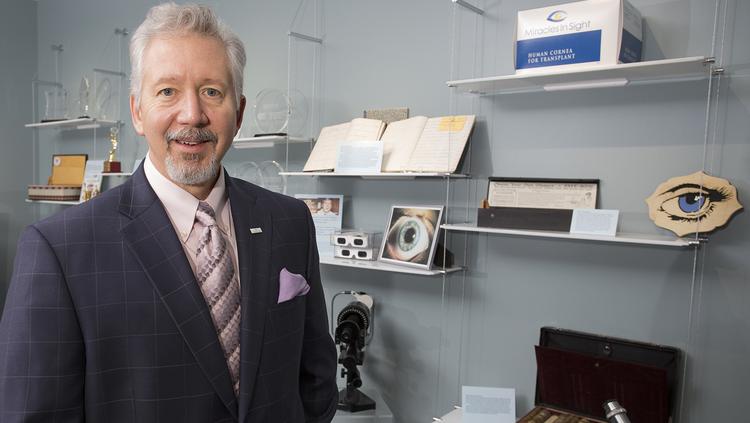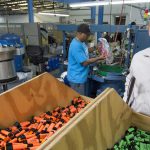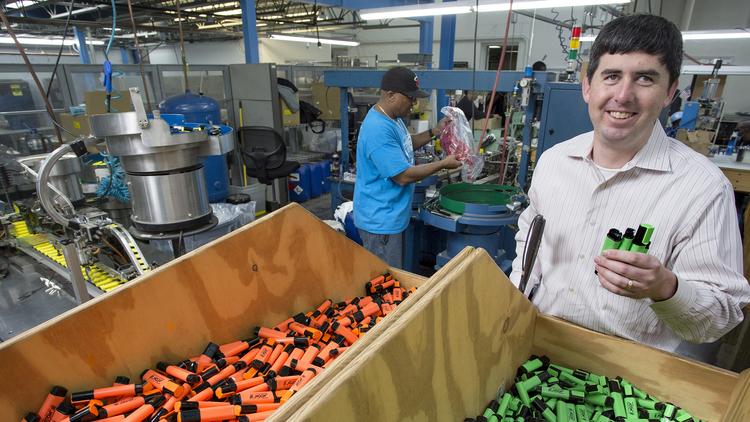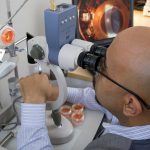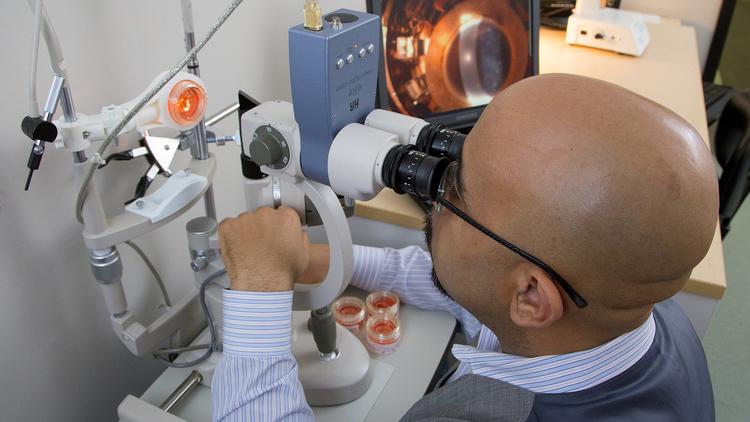

I am a three-time corneal tissue recipient.
In 1984-85 I had recurring corneal scratches on both eyes from wearing hard contact lenses. I was diagnosed with Keratoconus. I began wearing “piggy-back” lenses (a soft contact lens over the cornea with a hard contact lens on top), which worked fairly well for about a year. In October 1986 and 1987 Dr. Gary Foulks at Duke Eye Center performed corneal grafts (epikeratoplasty) on both eyes. This worked well with the aid of either glasses or contact lens for about 20 years.
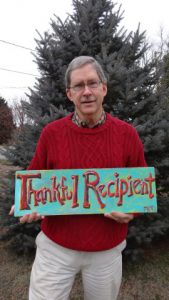 In late 2006 I began to experience significant glare problems. Dr. Terry Kim at Duke Eye Center told me that my cornea were getting “wavy”, distorting the light refraction, resulting in glare. My diminishing ability to see caused numerous problems: seeing the computer at work, driving safely, reading and watching television. I had to use binoculars to see the printing on my 32 inch television sitting 9 ½ feet away. To read the newspaper or a book I used a pair of 5.0 reading glasses and a magnifying glass.
In late 2006 I began to experience significant glare problems. Dr. Terry Kim at Duke Eye Center told me that my cornea were getting “wavy”, distorting the light refraction, resulting in glare. My diminishing ability to see caused numerous problems: seeing the computer at work, driving safely, reading and watching television. I had to use binoculars to see the printing on my 32 inch television sitting 9 ½ feet away. To read the newspaper or a book I used a pair of 5.0 reading glasses and a magnifying glass.
In Spring 2009 Dr. Kim performed cataract surgery and lens implants in both eyes. The right eye improved to 20/40, but the left eye only 20/200, due to the corneal degeneration.
In 2010 my vision was improved by a pair of hybrid contact lenses (hard center/soft outer portion). Unfortunately, I had a difficult time removing this type lens and finally had to stop wearing them. My prescription glasses were no longer helpful, leaving me with no way to correct my vision and significantly impacting my quality of life.
In November 2012, Dr. Kim performed a corneal transplant on my left eye. The improvement has been stunning—very little glare, much better vision (from 20/200 to about 20/30). After approximately a one year recuperation, I hope to be fitted with either prescription glasses or contact lenses to get my vision close to 20/20.
Thanks to the work of the Miracles In Sight and its dedicated staff, the amazing medical technology available today and most importantly the caring, thoughtful donors and their families, people like me are able to lead a more normal life once again. I can’t think of a better legacy to others than to give someone an improved quality of life by being a corneal tissue and organ donor. I know that I will.

